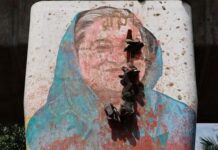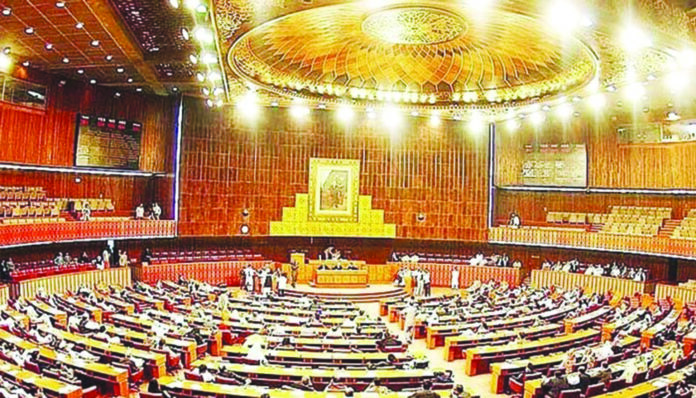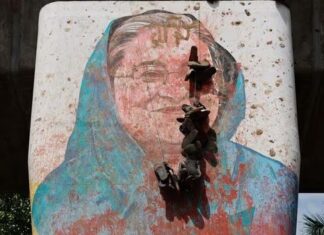AT PENPOINT
The Constitution is very clear that if the National Assembly or any Provincial Assembly, is not dissolved earlier, it will stand dissolved five years after it first meets following a general election. That means that the current National Assembly, and the Sindh and Balochistan Assemblies, having met on 13 August 2018, will stand dissolved on that day. The governments they have thrown up will stand dissolved, and caretaker governments will take over, and there will be general elections within 60 days. Of course, if the PM or CMs advise a dissolution earlier, say on August 10 or 11, the elections will have to be held in 90 days.
That is the constitutional scheme. As was rather rudely shown in the case of the January dissolutions of the Punjab and KP Assemblies, the process is not as inevitable as any constitutionalist would wish. Those two Assemblies were dissolved in January, but elections were not held to them. In both cases, the CM advised the dissolution; in Punjab the Governor did not dissolve at once, but allowed the CM’s advice to take effect in the constitutionally prescribed 48 hours; in KP, the Governor dissolved the same day, indeed at once on receiving the CM’s advice. This should have been followed by elections in 90 days, and caretaker governments were sworn in. Instead, the caretaker governments have settled in. There was a lot of legal back-and-forth, and the end result was a massive judiciary-executive clash, with the latter refusing to obey the former’s order to hold fresh elections.
Whatever the rights and wrongs of the matter, it was shown that judicial orders could be disobeyed. That the Supreme Court could be seen as not observing neutrality, but favouring one political party did not help. It ended up removing the one ‘honest broker’ that could mediate between the various parties. The prospect, multiply unwelcome, is opened up by the Election Commission simply putting forward the date simply because it can.
The dissolution of the two provincial assemblies was not the real gamechanger. Nor was the arrest of PTI chairman Imran Khan. It was the reaction to that arrest, when the PTI engaged in attacks on military installations, including burning the Corps Commander’s House in Lahore. Imran has denied that PTI workers were involved, saying that the protesting crowds were penetrated by intelligence agency operatives acting as agents provocateurs. That claim did not stop the implosion of the PTI, as leader after leader was arrested, then released from custody to hold a press conference in which that leader left the PTI, condemned the May 9 attacks, and declared devotion to the PTI. Some added the flourish that they were leaving politics. Two parties have since been formed from the wreckage, the Istehkam Pakistan Party of Jehangir Tareen, and the PTI-Parliamentarians of Parvez Khattak.
The PTI was the party likeliest to win the coming election, but is no longer. That is because it no longer has the personnel that were given to it. It is worth noting that some of those considered they may not be able to make their way back to their old parties, but it may be that they also see the PTI ticket as the path to success in their constituencies. That gels with the common impression that, while May 9 more or less destroyed the PTI’s structure, and put it against the establishment, it did not affect its votebank, or at least did not damage it enough to make it unviable for candidates. The unviability of its ticket comes from another source.
One result is that it is shaping up as a three-way race. There will be a lot of ex-PTI figures contesting as independents. The prospects seem directed towards a hung Parliament, with one major party collecting the smaller parties around it.
It is the same source that made that ticket so attractive in 2018; that not only would the candidate get the party’s supporters’ votes, but also the help of secret forces, which would enable the casting of votes in some constituencies (though a consistent fake-vote operation was last detected in the by-elections following the 1988 polls). There would also not be the pre-poll rigging where the PTI got the better candidates, the ones with the larger votebanks, the bigger war-chests.
Incidentally, the PTI did nothing to reform the party structure, and continued the tradition of candidates funding their own campaigns. One result has been the dominance of electables, and the fact that workers do not stand a chance. The PPP in particular, though other parties also, have faced this dilemma. Electables are not loyal, at least not to the party giving them a ticket. Yet parties have to turn to them because workers are usually too poor to spend on elections.
It should not be forgotten that Pakistan’s elections are at the place where the UK’s used to be in the 18th century, where the ‘establishment’ (the King and his courtiers) won. In the 18th century, the government always won the election; it was only in the middle of a Parliament’s tenure that governments used to fall, with the Prime Minister being replaced by a new favourite. Indeed, it was customary for a PM to ignore the election result and remain in office even if his party was defeated.
Only when he was defeated in the House would he then go to Buckingham Palace to tender his resignation to the monarch. As his last act in office, he would advise the monarch as to who to invite to form the government: his opponent. It is understood that the PM can do nothing except on the advice of the Prime Minister, not even appoint his successor. Of course, while British PMs have said much harsh about their opponents, they have never called them thieves or dacoits.
Interestingly, whereas during the 1990s it was clear at every election that the next PM would be either Mian Nawaz Sharif or the late Benazir Bhutto, now it is not so clear. The PTI may enter the election with its candidate, Imran, disqualified, even jailed, while the PML(N) may not have enough time to clear Mian Nawaz Sharif. The establishment is said to favour Mian Shehbaz, while the PPP may offer either Asif Zardari or his son Bilawal.
One result is that it is shaping up as a three-way race. There will be a lot of ex-PTI figures contesting as independents. The prospects seem directed towards a hung Parliament, with one major party collecting the smaller parties around it.
The election now almost upon us is likely to be one in which the establishment is likeliest to get the results it wants: a hung Parliament, where small groups, which listen to it will hold the balance. The problem is that the three largest parties, the PML(N), PPP and PTI, do not want neutrality so much as for the establishment to be firmly in its corner, delivering it electables, and making sure it wins.























